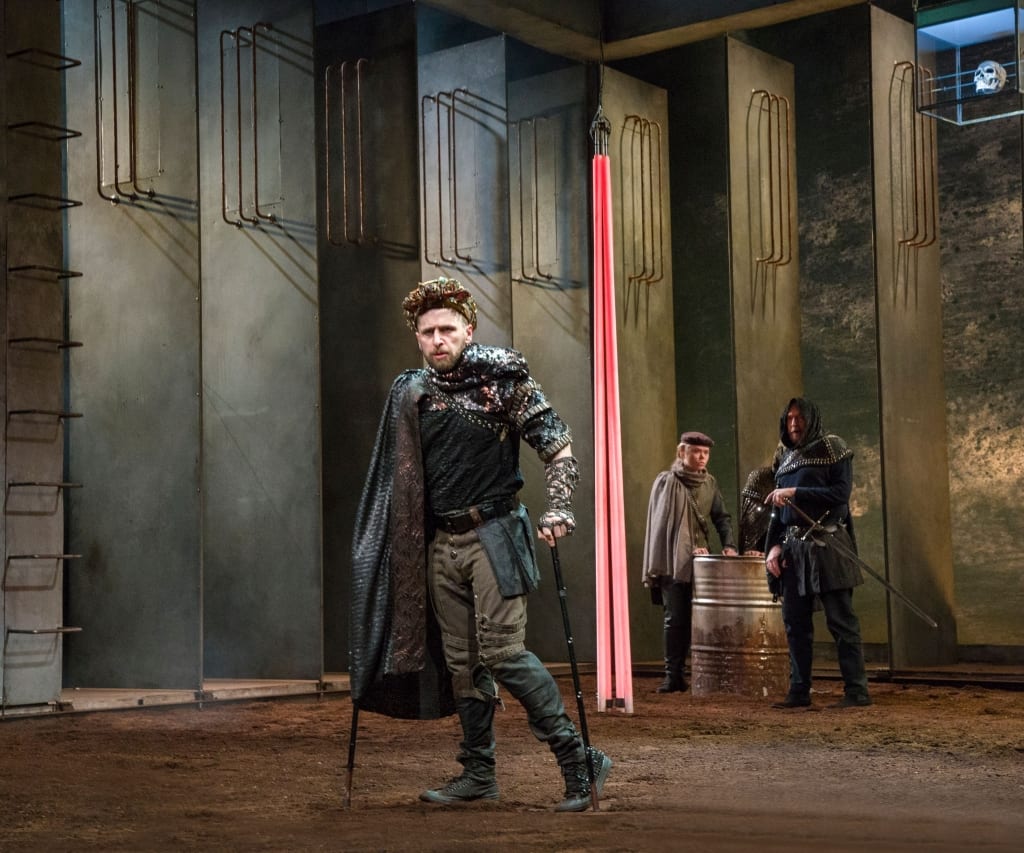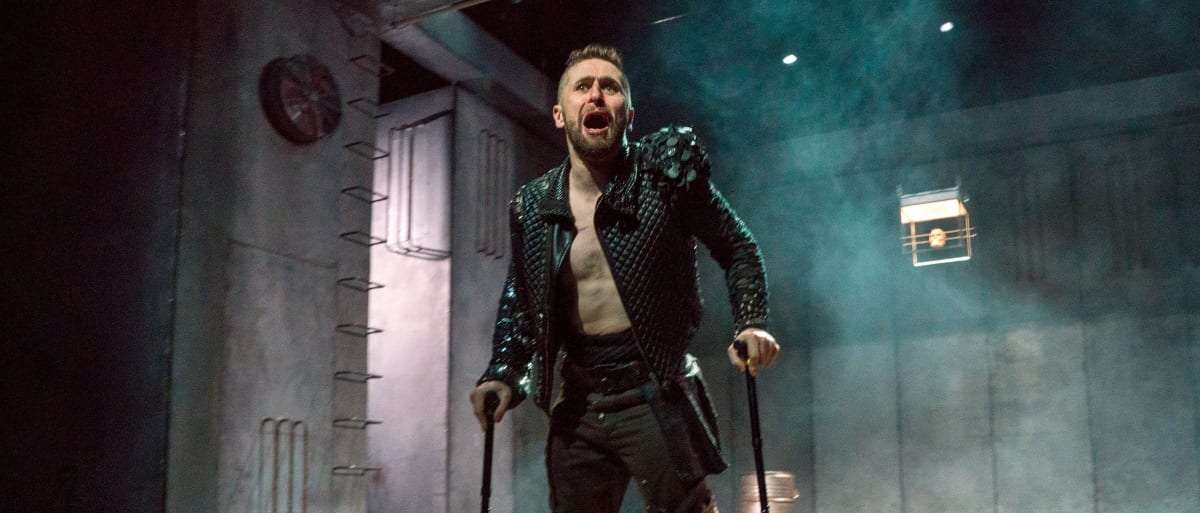The drama of Shakespeare’s histories is famously wracked with the a singular theme – the burden of a king’s crown. So it’s no surprise that for much of Druid’s Richard III, an ensconced skull – which, always visible above the action of the play, bears witness to every foul deed – wears the hollow crown for itself.The bloody culmination of Shakespeare’s Henriad, Richard III has one of the highest body counts in the Shakespearean canon, including the deaths of no less than three English kings. It is in this bleak landscape that we meet our titular character, Richard himself: willing and eager to guide the final nail to the coffin.
Richard appears from a grave, half-concealed, and chatting with the audience as if we are old friends. It is only when he explains his physical deformity that he reveals his whole body, climbing out of the ground to display a twisted leg and two crutches which he uses nimbly, almost as extensions of his own body. Aaron Monaghan’s gripping performance is the core around which this production revolves. Despite the mounting evidence to the contrary, Monaghan manages to pull off a Richard who is almost charming. Endlessly charismatic and even roguish, Monaghan couples Richard’s silvery tongue with an impressive physical performance that reads almost like choreography. Even if nothing else about this show engages you, you will be captivated by the sheer elegance in Richard’s movements. His use of his crutches and the ways in which he wields his physical disability to exact sympathy, impose fear, or engender intimacy speak as loudly as his words.

The England of the twilight years of the Plantagenet dynasty is a dark one – this is evident enough in the murder after murder that we watch on stage. The setting serves to enforce this: there is a distinctly dystopian feel to the stark metal and rusty pipes that make up the minimalist set. As we watch Richard’s enemies being executed in a slaughterhouse-like setting and dropped into a grave with a cold-blooded ritualism that might remind of Sweeney Todd, it strikes one that dystopia is exactly how the medieval English court during the Wars of the Roses might have been described.
After intermission, when Richard finally reaches up to claim the king’s crown from the skull that has been wearing it, the roguishness melts away. His brutality is no longer masked by his charisma or his clever turns of phrase. Quite unlike the unshakable, totally amoral, endlessly cheery Richard of Gloucester from before the coronation, King Richard III is prone to fits of rage. It is clear that he is losing the power to manipulate people with his words, and he begins to resort to violent outbursts and shouted death threats. It is also around this time that the show begins to lag. Monaghan cannot play Richard’s desperation as dynamically as Richard’s scheming.
After more threats and some heavy-handed portent, Richard is finally defeated, the play ending without much of a bang. But even as Richard’s vanquisher, the soon-to-be Henry VII (Frank Blake), is coming to the close of his final line, director Garry Hynes throws one last, lasting twist at us. Exhausted in his victory, Henry Tudor – now wearing Richard’s crown – staggers off the battlefield, supporting himself on his own sword and the one he took from Richard III. As he walks offstage, becoming only a backlit silhouette, his body suddenly twists to mimic the deformity that so defined Richard, and startling, Psycho-esque music crashes down as the stage lights go dark. And so you will leave this play with your mind engaged at last. Is the crown, and not Richard’s treachery, the source of villainy? Is it a challenge to the Tudor propaganda laced throughout this play which paints Henry VII as idealized knight in shining armor, but who we know in reality ushered in a new dynasty that will be all but peaceful? And still the skull above presides over the kingdom of England and the hollow crown.

